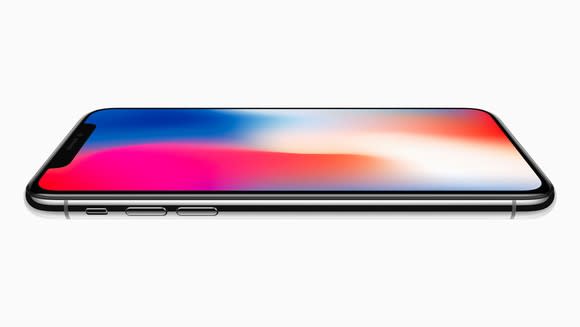Apple Inc.'s Best Product Launch of 2017
Fiscal year 2017 hasn't been Apple's (NASDAQ: AAPL) best year. Though it has enjoyed some revenue growth over the last nine months, increases in the company's cost of sales and higher operating expenses have led to roughly flat operating income over the first nine months of the prior fiscal year.

Image source: Apple.
On top of that, Apple's operating income over the last nine months as well as during the first nine months of its fiscal year 2016 are both down approximately $8 billion from the levels seen in the fiscal year 2015, during which Apple experienced explosive growth from the iPhone 6-series sales cycle.
That decline in Apple's revenue and profits from the peak was mainly due to lower iPhone sales during the iPhone 6s and iPhone 7 product cycles compared to iPhone 6 sales during that same period in fiscal year 2015.
Some blame the lower iPhone 6s and iPhone 7 sales on the fact that they didn't bring the kinds of innovations that would spur rapid upgrade activity.Â
This year, however, Apple released a product that's so interesting that it has the potential to not only to push the iPhone business to new heights but to serve as a foundation for many years of continued iPhone growth.
That product is iPhone X.
Overhaul in appearance, lots of innovative new technologies
The iPhone X represents the first fundamental overhaul of the iPhone look since the introduction of the iPhone 6 and 6 Plus in 2014. The phone has a full-face organic light-emitting diode (OLED) display, which allows it to not only make up the ground that it lost to its competition in terms of screen-to-body ratio but to take a decisive lead.
On top of that, Apple introduced a new facial recognition technology, dubbed Face ID, that it claims is easier to use and more secure than the Touch ID fingerprint recognition technology that it introduced with the iPhone 5s in 2013.
Though I haven't used Face ID, the demonstrations of the technology that I've seen in Apple's official presentations, as well as videos posted by members of the press giving the technology a whirl, look compelling.
And, of course, Apple delivered the typical internal improvements and camera enhancements that one would expect from a new generation of iPhone.
This all adds up to a package that I think will finally convince many iPhone users who haven't been impressed with post-iPhone 6 smartphones to upgrade.
Charging more for innovation
Apple has long been limited by the innovations that it can deliver within the typical iPhone price range. Since the launch of the iPhone 6 series smartphones, Apple has had to release new phones that could be sold at the $649-$699 and $749-$799 price points, respectively.
In fact, Apple did so again with the launches of the iPhone 8, which begins at $699, and the iPhone 8 Plus, which starts at $799.
However, by pricing the iPhone X at $999 for the baseline model, Apple had the ability to endow it with unique technologies (like the TrueDepth camera and the OLED display) as well as use more expensive materials, like stainless steel for the band, than it could've otherwise.
If Apple sees strong demand for the iPhone X at a starting price of $999, then not only would that be a proverbial green light from consumers to continue building such pricey phones (but with innovations to match), but it'd lead to what could be a permanent boost in iPhone average selling prices.
That could drive significant iPhone growth, which, given that iPhone is easily more than half of Apple's business these days, would mean significant revenue and profit growth for the company.
On top of that, if Apple sees strong demand at the $999-$1149 price points, then that could embolden the company to build even higher-end models that sell for even higher prices, further fueling the average selling price, revenue, and profit growth stories at Apple.
More From The Motley Fool
Why You're Smart to Buy Shopify Inc. (US) -- Despite Citron's Report
6 Years Later, 6 Charts That Show How Far Apple, Inc. Has Come Since Steve Jobs' Passing
NVIDIA Scores 2 Drone Wins -- Including the AI for an E-Commerce Giant's Delivery Drones
Ashraf Eassa has no position in any of the stocks mentioned. The Motley Fool owns shares of and recommends Apple. The Motley Fool has the following options: long January 2020 $150 calls on Apple and short January 2020 $155 calls on Apple. The Motley Fool has a disclosure policy.
